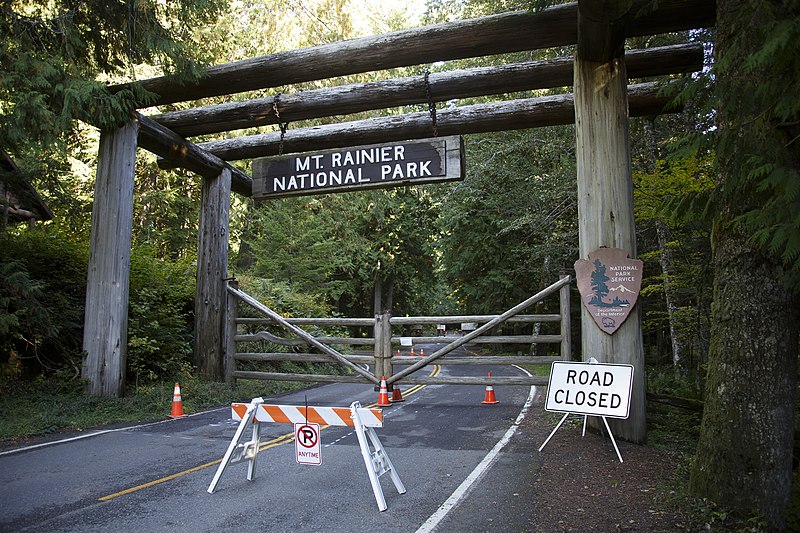Three weeks into the government shutdown, you’ve no doubt heard that our national parks have turned into dangerous, poop-filled wastelands. “National Parks Transform into Wild West — Heavily Populated and Barely Supervised,” read one Washington Post headline. “National parks are America’s public lands, but right now they’re America’s trashcans,” said National Geographic.
Our national parks are indeed in a bind, and some are facing immense pressures as they try to remain open with limited resources while the shutdown persists. But they are not exactly the post-apocalyptic dystopias that the media seems to think. And under new shutdown guidelines established by the Trump administration, our parks have been rightfully spared from serving as pawns in Washington’s partisan budget battles as they did in the past.
Under a contingency plan created by the administration, park officials are allowed to keep sites accessible to visitors during the shutdown with skeletal staffs, rather than being forced to close them as was the case during the 2013 government shutdown presided over by President Obama. That means many important visitor activities and park operations — from snow-coach rides in Yellowstone run by private concessionaires to guided battlefield tours of Gettysburg — can continue yielding economic benefits for the surrounding communities. This week, the National Park Service also announced it will begin tapping unspent visitor-fee revenues to bolster operations at some parks.
These new plans are attracting criticism in the familiar anything-Trump-does-must-be-bad vein. Theresa Pierno of the National Parks Conservation Association slammed the administration’s decision to keep parks open, calling it “unrealistic and dangerous,” even though the NPCA repeatedly called for parks to be reopened during the 2013 shutdown. Representative Raúl Grijalva, the new Democratic chairman of the House Natural Resources Committee, pledged to hold hearings on the administration’s decision to support park operations with fee revenues.
This criticism is mostly just partisanship disguised as outrage over parks. First, the Trump administration’s contingency plan doesn’t mandate that parks keep their gates open regardless of the consequences. Rather, it gives park superintendents the option to keep areas open, as well as to continue allowing private concessionaires to operate within the parks they run. This differs markedly from the Obama administration’s shutdown plan, which required even privately run operations within parks that do not rely on congressional appropriations to close.
The Trump administration’s approach is sensible. Why unnecessarily ruin visitors’ plans or jeopardize the millions of dollars in revenue that local communities receive from park visitation? If visitation begins to pose significant health or safety concerns, the contingency plan gives park superintendents the option to close areas or shut down parks entirely, as some parks have already done.
What’s more, the administration’s plan gives local managers the discretion to enter into creative funding arrangements to keep parks operating. Since the shutdown began, the Park Service has signed more than 40 agreements with concessionaires, nonprofits, and state governments to provide visitor services such as trash removal and restroom cleaning. The Obama administration’s 2013 shutdown plan did not allow for such partnerships with nonprofit or private partners.
Yet some seem to want to portray Trump’s approach as illogical and dangerous, despite the fact that hundreds of millions of acres of federal lands that are not national parks, such as those managed by the U.S. Forest Service and the Bureau of Land Management, typically remain open during shutdowns and are largely unsupervised on a daily basis even when the government is running. Several media outlets issued alarming reports noting that three park visitors have died in accidents since the shutdown began. But, according to the National Park Service, six people die each week on average in the park system — and that’s when the government is fully functioning.
The truth is that, aside from a few viral images of overflowing trashcans and a reckless act of vandalism in Joshua Tree National Park, many parks are doing fine under the administration’s shutdown plan. As NPR reported last week, private companies are paying $7,500 a day to keep snow-covered roads groomed and bathrooms clean in Yellowstone. Concessionaires, guide services, and local nonprofits have a keen interest in making sure park visitors — many of whom booked winter excursions months in advance — have a great experience, so it makes sense that they’ve been willing to step in even at their own expense.
Some, including the NPCA, would apparently prefer that these good-faith efforts not be tolerated in the first place. “There is no substitute for National Park Service staff and their expertise, and it is not wise to put the public or our park resources at risk by allowing for half-measures to keep them open,” said Pierno, who has also criticized the administration’s plan to allow parks to use their own fee revenues to reopen some sites.
The Trump administration is right to find creative ways to keep national parks open and to grant park officials more discretion to decide what’s best rather than mandating unnecessary closures. Even more to the point, park advocates should applaud efforts to make our parks more self-sufficient and less reliant on the whims of political funding decisions or presidential temper tantrums. That way, parks wouldn’t have to become props in the shutdown circuses that are becoming increasingly common.
Make no mistake: None of this is to say that parks don’t need congressional support, or that the government shutdown is somehow justified. It is merely to point out that finding ways to depoliticize the operation and management of our park system is a good thing. Unfortunately, the faux outrage of the NPCA and others proves once again that some will never miss a chance to play politics, even with something as beloved as America’s national parks.
This article was originally published in National Review.




